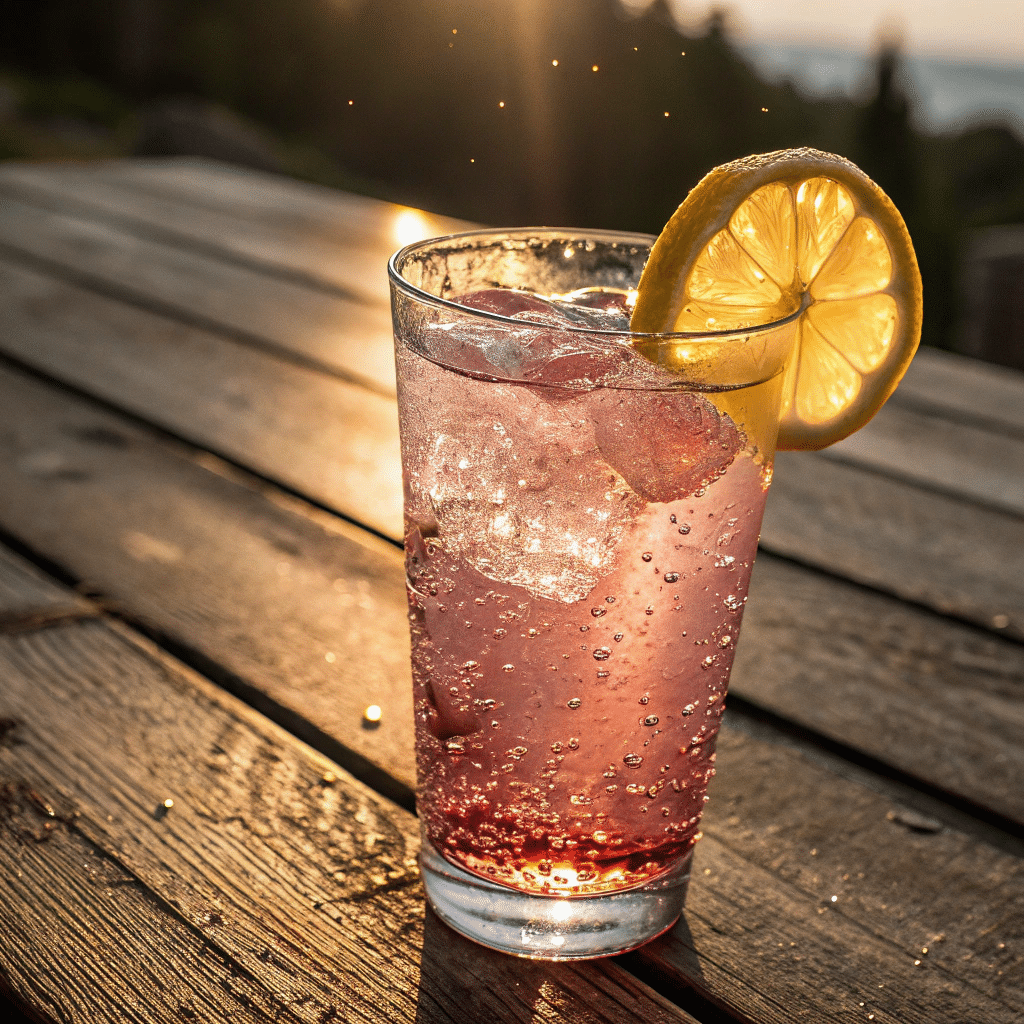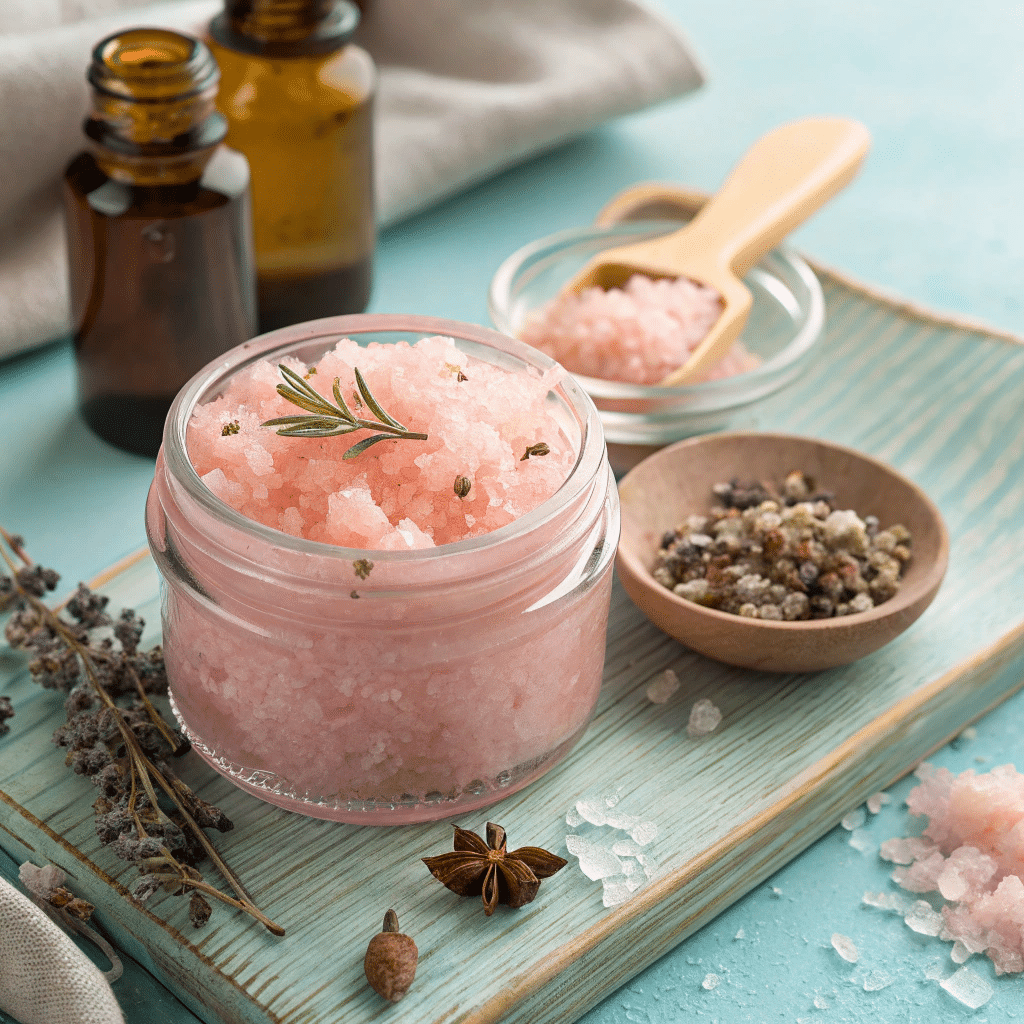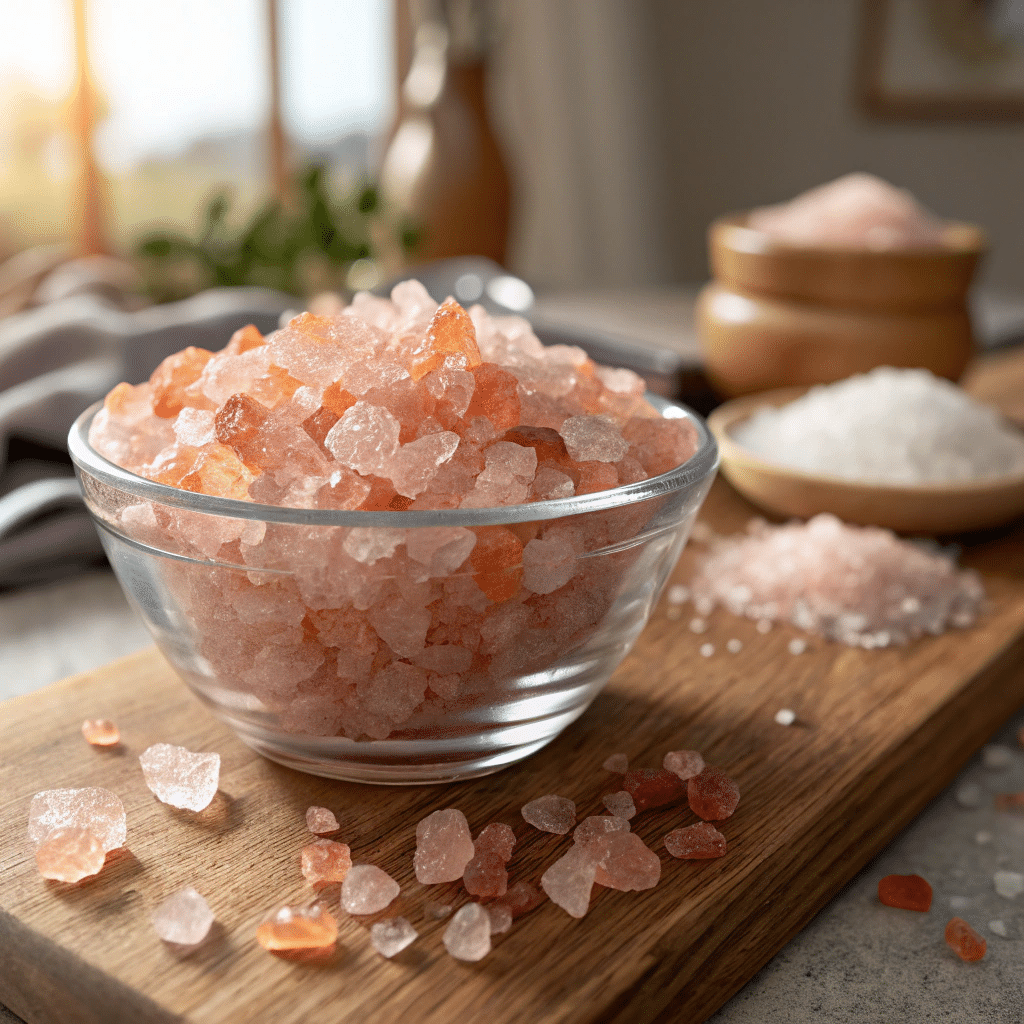Pink salt has taken the wellness world by storm sprinkled across gourmet dishes, swirled into detox drinks, and even glowing softly in bedrooms as crystal lamps. But what’s the real story behind this trendy mineral? Is it healthier than your average table salt? Can it actually support weight loss? And what gives it that unique blush tint?
In this complete guide, we’ll explore everything from its origins and composition to health claims, practical uses, and even the science behind popular weight loss trends. Whether you’re looking to replace your kitchen salt or curious about its effects on the body, you’re in the right place.
Table of Contents
What Is Pink Salt?
Why does this mineral stand out from ordinary salt?
Pink salt is a naturally occurring mineral extracted mostly from the Khewra Salt Mine in Pakistan one of the oldest and largest salt mines in the world. Unlike the heavily processed table salt found in most kitchens, this type is harvested with minimal refinement, allowing it to retain tiny amounts of natural minerals like calcium, magnesium, and potassium which are believed to contribute to both its color and wellness appeal.
Technically known as halite, it belongs to the rock salt family. What makes it different isn’t just its blush-pink hue it’s the absence of additives and anti-caking agents found in many processed salts. For this reason, it’s often seen as a more natural alternative for health-conscious users.
Types of pink salt around the world (Himalayan, Bolivian, etc.)
Not all pink salt comes from the same place or tastes the same. Let’s break down a few of the most common varieties:
| Type | Origin | Characteristics |
|---|---|---|
| Himalayan Pink Salt | Khewra Mine, Pakistan | Rich in 80+ trace minerals, coarse crystals |
| Bolivian Rose Salt | Andes Mountains | Milder taste, paler color |
| Peruvian Pink Salt | Maras, Peru | Harvested from natural spring pools |
Each regional variety has a distinct mineral profile, but Himalayan salt remains the dominant choice due to its availability and global marketing.
Composition and Chemical Structure
Chemical formula of pink salt
At its core, pink salt shares the same base composition as regular table salt: sodium chloride (NaCl). However, what sets it apart is the presence of trace minerals up to 84 of them naturally embedded in its crystalline structure.
While NaCl accounts for about 95% to 98% of its makeup, the rest includes small but impactful quantities of:
- Calcium (Ca)
- Potassium (K)
- Magnesium (Mg)
- Iron oxide (Fe₂O₃) – which gives it the pink color
These added minerals contribute not just to color but also to a subtle difference in taste and texture. It’s slightly less sharp and more rounded in flavor compared to white salt.
Minerals and trace elements in pink salt
Below is a table showing a breakdown of the key minerals found in Himalayan pink salt per 100g:
| Mineral | Approx. Amount (mg) | Benefit |
|---|---|---|
| Calcium (Ca) | 160 | Supports bone health |
| Potassium (K) | 3.5 | Maintains fluid balance |
| Magnesium (Mg) | 1.06 | Aids muscle and nerve function |
| Iron (Fe) | 0.36 | Boosts oxygen transport in blood |
| Zinc (Zn) | Trace | Supports immune function |
Despite these minerals, it’s important to remember that their quantity is quite low. You’d need to consume large amounts of pink salt to significantly boost mineral intake which is not recommended due to sodium risks.
Because it’s minimally processed, this salt retains its natural structure and isn’t bleached or stripped like some refined salts. This contributes to its visual appeal and perceived purity, which is a major reason for its popularity in the wellness market.
The Pink Salt Trick for Weight Loss
What is the pink salt trick and does it really work?
The so-called pink salt trick for weight loss has been making waves across wellness blogs and TikTok videos. But what exactly is it?
This “trick” usually involves drinking a glass of warm water mixed with a pinch of pink salt first thing in the morning. Advocates claim it helps jumpstart metabolism, improve digestion, and flush out toxins. Others use it as part of a detox cleanse or as a replacement for electrolyte drinks.
Some even take it a step further by creating “sole water” a fully saturated pink salt solution added to water in small amounts believing it helps balance hydration and reduce cravings.
But does the science back any of this up?
Scientific evidence behind pink salt and metabolism
While pink salt does contain trace minerals like magnesium, calcium, and potassium, the quantities are very small not enough to directly impact fat burning or weight loss.
Here’s what’s actually happening when people see results:
- Improved hydration
Salt helps the body absorb and retain fluids more efficiently. Staying hydrated can reduce bloating, help regulate hunger cues, and support energy levels during workouts. - Reduced processed food intake
People who adopt the “pink salt trick” often cut down on processed, high-sodium foods. The real benefit may come from swapping refined salt for a mineral-rich option, which leads to an overall healthier diet. - Morning routine consistency
Starting the day with a structured health habit even if placebo-driven can lead to improved food choices throughout the day, indirectly supporting weight goals.
Let’s be clear: pink salt is not a fat burner. It’s not a miracle weight loss solution. But as part of a balanced approach that includes proper hydration, clean eating, and exercise, it can support better habits.

Health Benefits of Pink Salt
How pink salt supports hydration and electrolyte balance
While it’s easy to think of salt as a simple seasoning, this mineral plays a crucial role in maintaining fluid balance and cellular function. Unlike regular table salt which is often stripped of its natural content this pink-hued variety includes small amounts of potassium, calcium, and magnesium.
These trace minerals act as electrolytes, helping your body regulate muscle function, nerve signals, and hydration. When consumed in moderation, adding a pinch to water or meals may enhance your body’s ability to absorb and retain fluids.
This can be particularly helpful:
- During or after workouts
- In hot weather when sweating is excessive
- For people on low-carb or keto diets, where electrolyte imbalance is common
However, the key word is moderation. Overuse of any salt, even one that’s rich in minerals, can lead to high sodium intake which raises blood pressure and risks for heart disease.
Pink salt’s role in improving respiratory function and sleep
Some wellness routines promote inhalation therapy using pink salt. This includes salt rooms or halotherapy, where fine particles are inhaled to clear mucus, reduce inflammation, and ease respiratory conditions like asthma or allergies. While clinical evidence is still limited, many report temporary relief.
Another common belief? That pink salt improves sleep quality. Some health advocates recommend drinking “sole water” (a mix of saturated pink salt and water) before bed to promote relaxation and reduce night-time cortisol levels.
Though formal studies are scarce, the idea is based on how minerals like magnesium are known to promote relaxation. Again, it’s important to remember that the amount of magnesium in pink salt is extremely low, so any benefit is likely minor or placebo-driven.
Pink Salt vs. Regular Salt
Nutritional comparison: How do they really differ?
On the surface, both pink and table salt seem similar they’re mostly composed of sodium chloride. But dig deeper, and there are subtle differences that set them apart nutritionally.
Here’s a quick comparison table:
| Feature | Pink Salt | Table Salt |
|---|---|---|
| Sodium Chloride (%) | 95–98% | 97–99% |
| Additives | None or minimal | Often includes anti-caking agents |
| Iodine Content | Naturally very low | Usually iodized for thyroid health |
| Trace Minerals | ~84 (magnesium, calcium, iron) | Almost none |
| Processing | Minimally processed | Heavily refined |
| Color & Texture | Pink, coarse or fine grains | White, fine crystals |
One significant difference is the lack of iodine in pink salt, which is a crucial nutrient for thyroid function. Regular table salt is typically iodized to help prevent deficiencies.
So while this mineral-rich alternative offers trace elements and a more natural profile, it shouldn’t be your only salt source unless you’re getting iodine from other foods like seafood, dairy, or supplements.
Taste, texture, and culinary appeal
Culinary enthusiasts often favor this salt for its mild flavor and crunchy texture. The mineral content adds subtle earthiness, making it ideal for finishing dishes like grilled vegetables, meats, and even desserts.
It also dissolves more slowly than fine white salt, offering a different mouthfeel in dishes where texture matters.
Here are a few ways chefs use it creatively:
- As a finishing salt on avocado toast or steak
- In curing meats or fermenting vegetables
- In handmade chocolates and salted caramel
That said, for precise baking recipes or dishes that rely on exact salt quantities, table salt is usually preferred because of its uniform grain size and sodium concentration.
How to Use Pink Salt in Daily Life
Cooking and seasoning with pink salt
Pink salt, with its light mineral flavor and coarse grains, is often used as a finishing touch sprinkled on meals post-cooking to enhance texture and elevate presentation.
Here are common culinary uses:
- Finishing salt for roasted vegetables, grilled meats, and eggs
- Seasoning base in marinades or rubs
- Salt crusts for baking fish or poultry
- Infused salts mixed with herbs for gourmet seasoning blends
- Baking salt blocks (Himalayan slabs) used to cook or serve foods
Its unique appearance also adds flair to homemade seasoning jars, food photography, and luxury recipe boxes.
Still, remember that it contains sodium just like any salt. Measuring by weight (not volume) helps maintain safe sodium intake, especially when replacing table salt.
Beyond the kitchen: bath soaks, body scrubs, and salt lamps
This versatile mineral isn’t just for eating it also shines in personal care and wellness routines.
🛁 Bath soaks and detox baths
Add 1–2 cups of pink salt to a warm bath to help relax muscles and promote skin hydration. The magnesium and potassium content though low can contribute to temporary relief from sore muscles.
🧴 Exfoliating body scrubs
Mix coarse grains with coconut oil or essential oils to create homemade body scrubs. It helps remove dead skin cells and improves circulation.
💡 Salt lamps and air purification
Salt lamps carved from Himalayan salt blocks are believed by some to purify air and emit negative ions, improving mood and sleep. Scientific evidence is minimal, but many people enjoy them for the aesthetic glow and calming ambiance.

Risks and Side Effects
Can pink salt be harmful if overused?
While pink salt is often praised for being more “natural,” it still contains sodium chloride as its primary component. That means the same health risks associated with regular salt apply here as well especially when consumed in excess.
Too much sodium can lead to:
- High blood pressure
- Kidney strain
- Fluid retention and bloating
- Increased risk of heart disease or stroke
The presence of trace minerals does not make this salt inherently safer. In fact, some people mistakenly believe they can use more of it without consequences, which can backfire over time.
Also, unlike table salt, this version typically lacks added iodine, a mineral essential for thyroid function. If pink salt is your main salt source, it’s important to get iodine from seaweed, dairy, or supplements.
Recommended daily intake guidelines
The American Heart Association recommends less than 2,300 milligrams of sodium per day, with an ideal limit closer to 1,500 mg for most adults.
Here’s what that looks like in pink salt:
| Serving Size | Approximate Sodium Content |
|---|---|
| 1/4 teaspoon | ~500 mg |
| 1/2 teaspoon | ~1,000 mg |
| 1 teaspoon (5g) | ~2,000 mg |
As you can see, it’s easy to go over the limit even with natural salt. Measuring your intake is essential even if the salt looks healthier.
For people with kidney issues, hypertension, or other cardiovascular concerns, consulting a doctor before increasing salt intake is a must.
Myths and Misconceptions
Debunking the “miracle cure” myth
One of the biggest misconceptions surrounding pink salt is that it’s a superfood or healing substance. Social media often portrays it as a cure-all for ailments like high blood pressure, insomnia, digestive problems, and even chronic fatigue.
However, most of these claims are not backed by scientific evidence. While pink salt does contain trace minerals, their concentration is too low to deliver therapeutic effects on their own. You’d need to consume dangerous amounts just to reach meaningful nutrient levels which defeats the purpose.
Common unsupported claims include:
- “It detoxifies the body”
- “It boosts metabolism”
- “It prevents all diseases”
- “It has anti-aging properties”
In truth, your liver and kidneys do the real detoxing. No type of salt can replace proper hydration, a balanced diet, or medical treatment.
Is pink salt truly more natural than other salts?
Yes and no. While it’s less processed than iodized table salt, it still undergoes cleaning and grinding. Plus, “natural” doesn’t always mean better especially when it compromises iodine intake or leads to overuse due to health halos.
Let’s compare:
| Claim | Truth |
|---|---|
| “All-natural and pure” | Yes, but not completely free of contaminants |
| “Safer than regular salt” | No still high in sodium |
| “Rich in nutrients” | Contains trace minerals, not a major source |
| “Detoxifying” | No proven effect on liver/kidney function |
In short, it can be a flavorful and attractive alternative but it shouldn’t be treated as a medical remedy.
Buying Guide and Storage Tips
What to look for when buying quality pink salt
With the market saturated by brands claiming purity and health benefits, how can you tell if you’re getting authentic pink salt?
Here’s what to watch for:
- Origin label: Look for products specifically marked as Himalayan, Bolivian, or Peruvian. True Himalayan salt usually originates from the Khewra Salt Mine in Pakistan.
- Color variation: Natural pink salt will have uneven crystal colors ranging from pale rose to darker orange. Uniform color could mean added dyes or poor quality.
- Grain type: Choose coarse or medium grain for cooking and fine grain for table use. Avoid “ultra-fine” options if you want to retain more mineral content.
- Packaging: Opt for salt packaged in glass jars or BPA-free containers to maintain freshness and avoid chemical leaching.
- Certifications: Check for food-grade labeling and certifications like USDA Organic (if applicable).
Also, be cautious of brands that advertise pink salt as a medical product. Any claim that it “heals,” “cleanses,” or “cures” should raise red flags.
Proper storage to maintain freshness and potency
Even though pink salt doesn’t spoil like perishable foods, it can absorb moisture and odors if stored incorrectly.
Here are smart storage tips:
- Store in a cool, dry place away from the stove or sink
- Use airtight containers to avoid clumping and contamination
- Avoid metal containers, as salt can corrode certain metals over time
- For bath or body use, keep it separate from your culinary stash

Pro tip: If your salt hardens or forms clumps, you can revive it by placing a few grains of uncooked rice or a food-safe moisture absorber in the jar.
Conclusion: Should You Use It?
This mineral-rich seasoning isn’t a miracle cure but it can be a smart addition to a healthy lifestyle when used mindfully. Whether you’re sprinkling it on meals, soaking it in your bath, or swapping it for processed options, it adds both function and visual appeal to daily routines.
That said, it still contains sodium. The trace minerals, while beneficial, are present in small amounts so the real value lies in balance and consistent healthy habits. From hydration routines to gourmet cooking, it fits best as part of a broader wellness approach, not a standalone solution.
For anyone aiming to reduce additives and explore more natural ingredients, this could be a flavorful step in the right direction just keep expectations grounded.
FAQs
What is the pink salt trick for weight loss?
The “pink salt trick” refers to drinking a glass of warm water with a pinch of pink salt first thing in the morning. Supporters say it boosts metabolism, curbs cravings, and promotes digestion. While it may aid hydration and replace electrolytes in low-carb diets, there’s no scientific proof that it causes direct fat loss. Any weight benefits are more likely tied to improved routines and healthier eating habits.
What is the chemical formula for pink salt?
Like regular table salt, pink salt’s base compound is sodium chloride (NaCl). However, it also contains trace minerals like magnesium, calcium, potassium, and iron oxide (which gives it the pink hue). These additional elements make up about 2%–5% of its total composition.
What is the difference between normal salt and pink salt?
The main difference lies in processing and mineral content. Table salt is heavily refined, often contains anti-caking agents, and is usually iodized. Pink salt is minimally processed, lacks iodine unless added, and contains up to 84 trace minerals. It also has a coarse texture and visually distinctive pink color due to iron compounds.
What does pink salt do to the body?
When used in moderation, pink salt can help maintain fluid balance, support nerve and muscle function, and improve electrolyte levels especially during physical activity. It may also promote relaxation when used in bath soaks or sole water. However, excessive intake can still lead to high blood pressure or kidney strain, just like with any salt.

